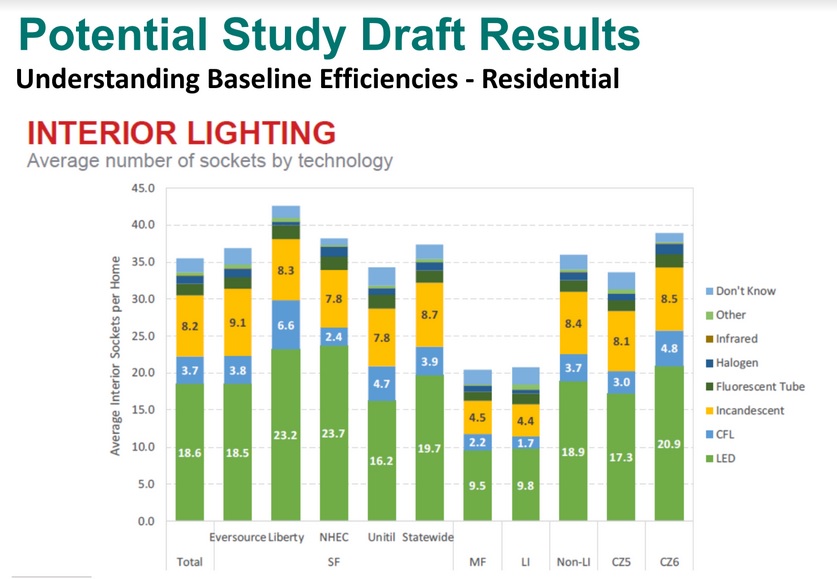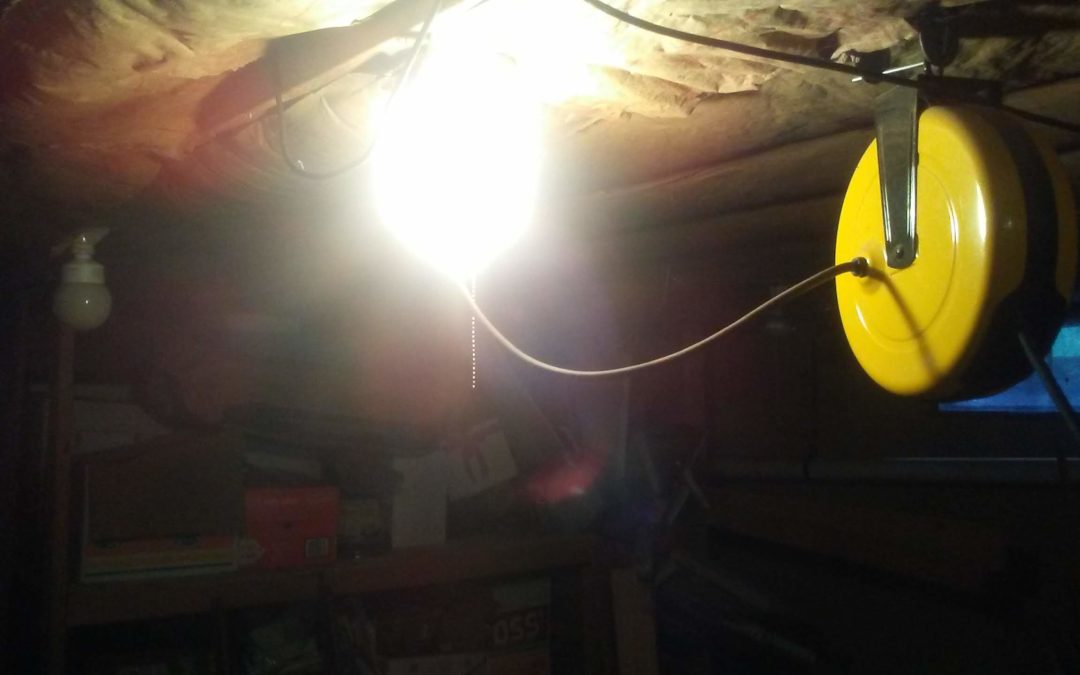NHSaves, a program to urge energy efficiency in the state, and sometimes give financial to upgrading items, sent out an item today telling people how bad incandescent bulbs are. That led me to wonder: Who uses incandescent bulbs any more?
Funky restaurants use them to look cool (or did before COVID) and there are a few specialty applications where replacements don’t exist, but otherwise I assumed those filaments had all burned out. Remember how we used to have to buy new bulbs every time we went to the hardware store because they died so quickly?
So I thought I’d asked granitegeekers: Do you still use incandescent bulbs in your house? If so, where and why?
I have two of them, both in the basement in sockets that are almost never turned on. When they die they’ll be replaced with LEDs.
After I posted this query on Twitter, Madeleine Mineau, Executive Director of Clean Energy NH, forwarded me a presentation from the Energy Efficiency Resource Standards committee that included survey results saying the “average” New Hampshire home has almost 35 indoor light sockets, and 8 of them have incandescent bulbs. Both of those numbers are bigger than I would have guessed. Here’s a slide from the presentation:

Her email notes that the days of targeting filament bulbs is ending: “The programs are aware though that lighting retrofit opportunities are decreasing as replacement with LED becomes more and more the standard choice rather than something that needs to be encouraged or incentivized. The amount of efficiency savings gained from lighting are projected to decrease over the next 3 year plan as a result.”


 Return to the Concord Monitor
Return to the Concord Monitor
You are likely aware of this: https://en.wikipedia.org/wiki/Longest-lasting_light_bulbs with bulbs that have lasted over 100 years. I seem to recall an anecdote about manufacturers of such long-lasting bulbs going out of business due to a lack of repeat customers. I don’t know how true that is.
Lightbulb manufacturers deliberately made them crappy to boost sales – an anti-capitalist conspiracy theory that’s true. https://spectrum.ieee.org/tech-history/dawn-of-electronics/the-great-lightbulb-conspiracy
We use two in series in a mountian cabin, cuts wattage in half, last much longer, and limited lumins as night lights… few LEDs have low enough lumins to meet this arcane application.
We use incandescent bulbs for two heat applications: a makeshift heater to our chicken’s water dish doesn’t freeze, and in an old chest freezer now used for storing paint, in the workshop which otherwise only is heated when we are working in it. Both uses are seasonal, and each just uses a 25 watt bulb. But we’d be hard pressed to come up with a simple alternative.
The challenge I have is getting LEDs in low enough lumens. Being paranoid 🙂 🙂 , I like to have my front porch, driveway and deck illuminated. I would use 15 watt old style to give me the “right” illumination/lumens. If I use a LED in the 5 to 10 watt range – it gives me TOO much illumination like a hiway truck stop.
At hand – I don’t know what lumens I want but maybe in the 300 range or so. One thing I have not done is replace the switch with a dimmer switch. not sure if it will cause radio noise(still a fan of AM radio)
Over the years I have come up with solutions that meet my needs.
Hey Tim,
The reason lumens are now being referenced is to allow you to equate “today’s” energy saving light bulb wattages with the older incandescent wattages that were used.
Lower lumen output LEDs are more difficult to find due to their limited applications however, they do exist.
If you know the lumens of your old 15W, use same to find the equivalent lumens in an LED format.
It might be a little more difficult to find, but they do exist.
I bought a set of incandescent from Home Depot today (Jan 24, 2021). They were 40w bulbs with a standard base and flame shape for our dining room chandelier. They had the narrow base versions available in LED; but only had incandescent. I asked, they said it was old stock, just a bulb shape that sold slowly, so they just hadn’t ran out yet.
The fact that LEDs last a long time doesn’t hold for me. Now, I admit I DO buy cheap LEDs from Lowes and Home Depot. But I constantly am replacing bulbs that start to flicker after a few months of use. No years of life for MY LED Bulbs!
Just did a quick walk-thru and inventory of sockets and LED’s in my home and small barn. 116 total, counting LED 4 ft tubes as one. That isn’t counting all the lamps I’ve made for special locations from strip lights, bought as 3 meter rolls and placed under stair rails and for tools. I like lots of light and like the flexibility the strips offer as I cut them to length and power with computer walwarts.
i am moving far away from LED bulbs. they cause headaches in my children + myself, probably due to the quick flickering of their light production (which most don’t notice with their eyes, but our brains are certainly aware of), and/or the blue light spectrum they put out. damaging to our circadian rhythms if on after dark (which they obviously would be) and also just wayyy too harsh/bright white. incandescents all the way, but i’m harder pressed to find them these days.
Gave up on incandescent bulbs many year ago went with fluorescent first and then with LED, the last a long time and consumer little power there are a few I just keep on all the time and use them as a nightlight.